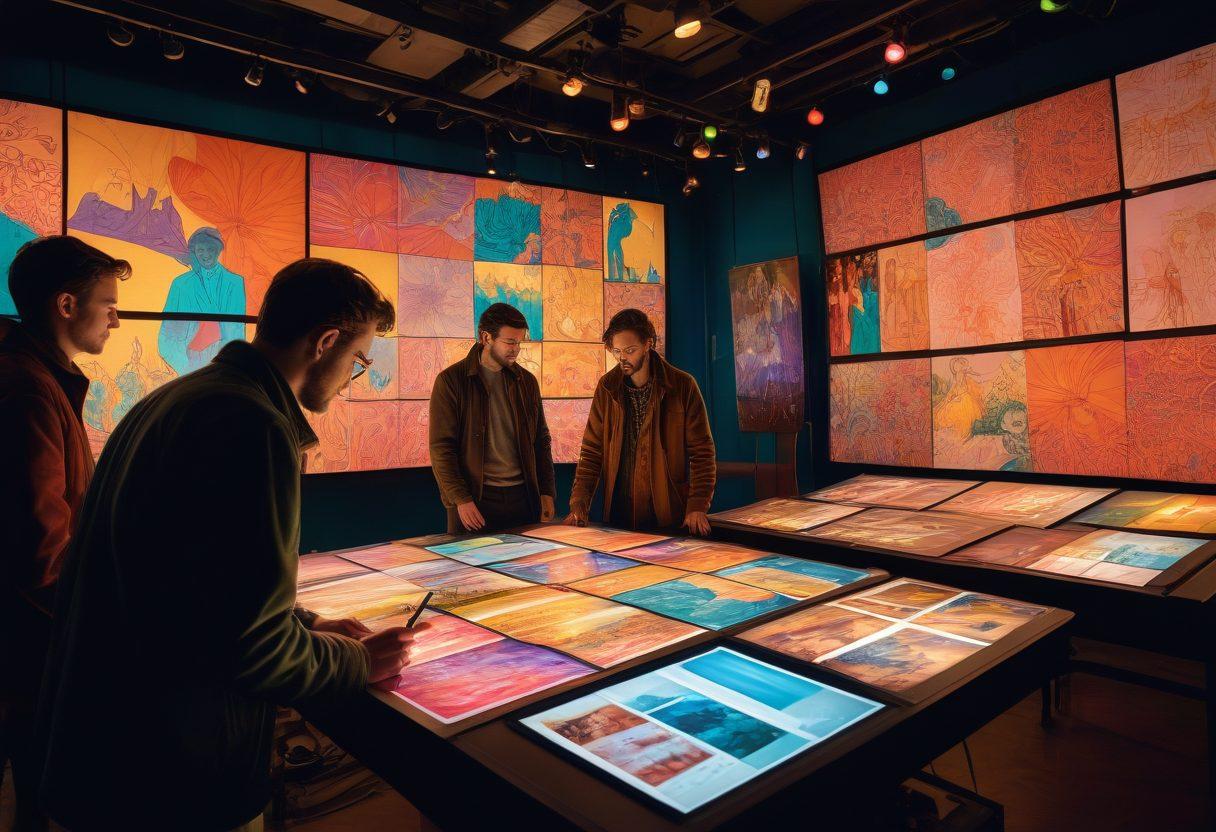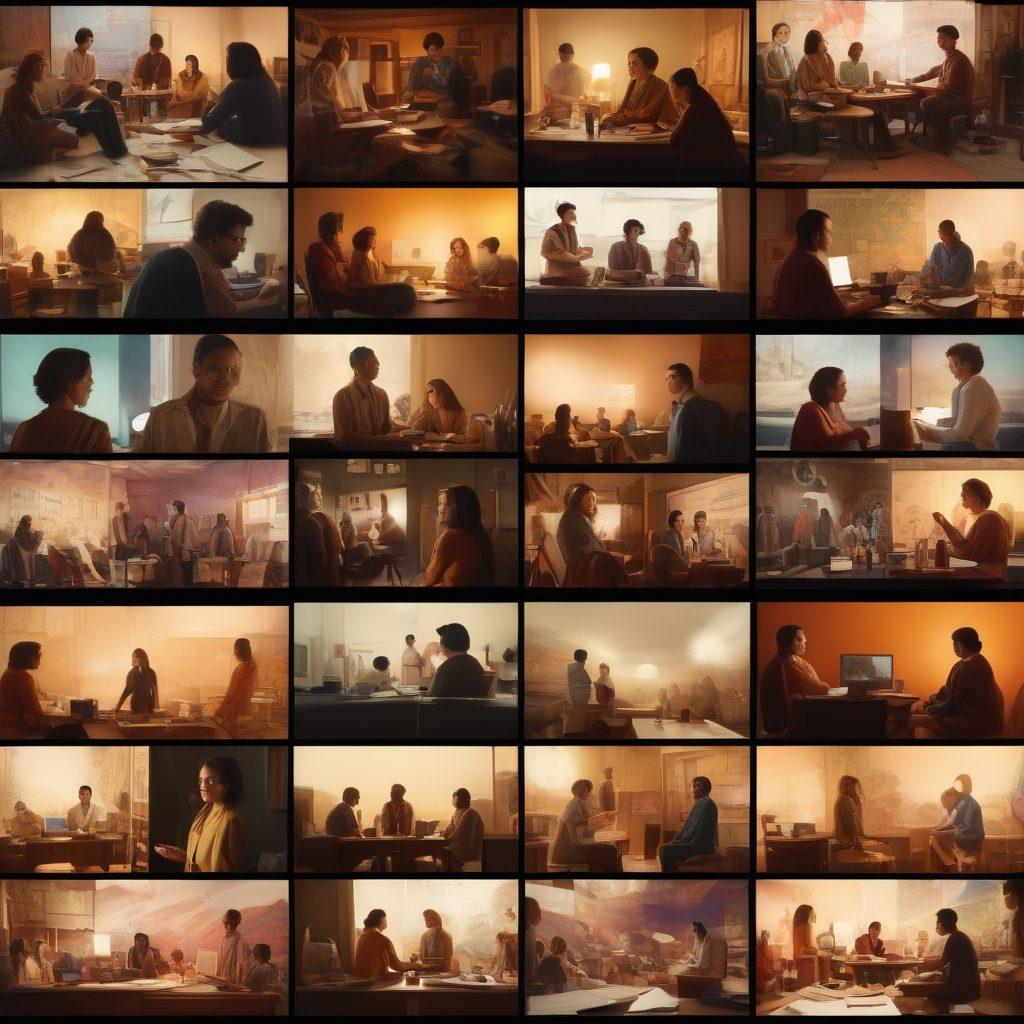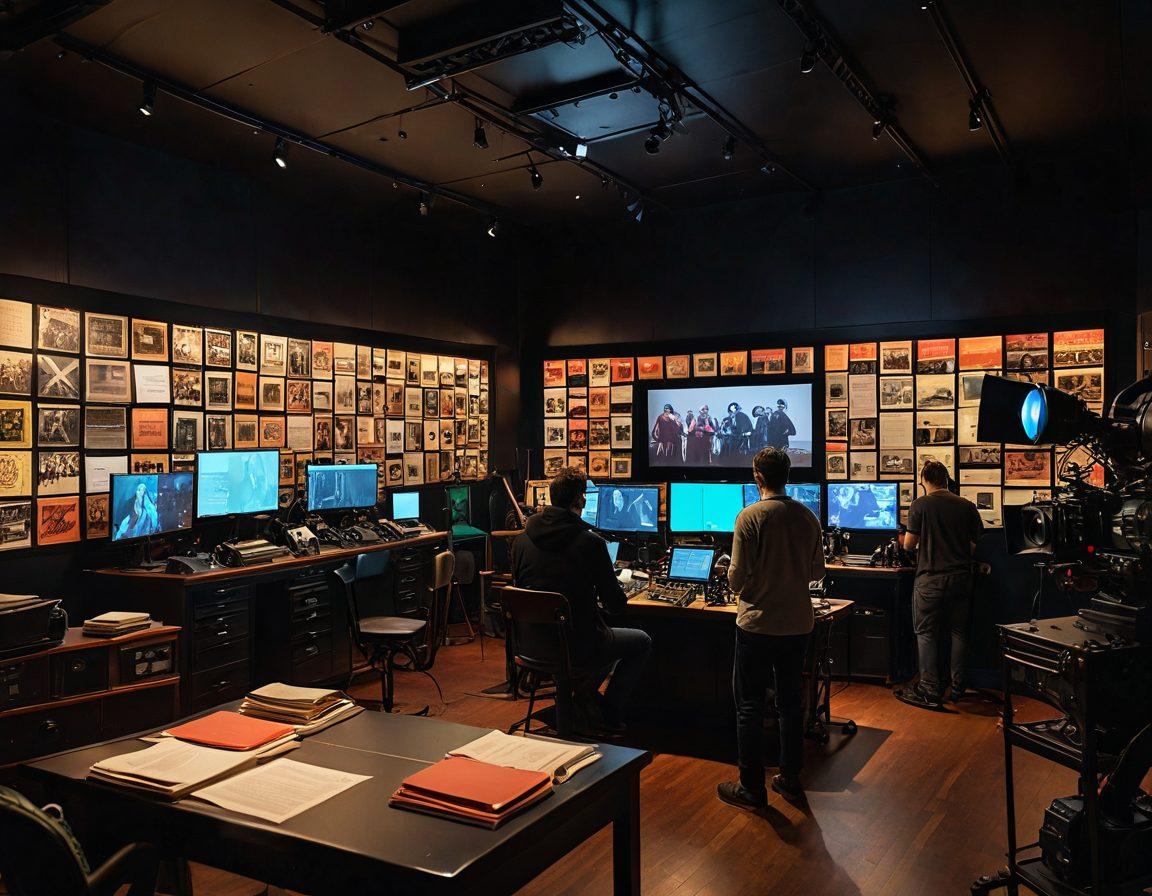Exploring the Art of Cinematic Storytelling: Techniques and Insights from Independent Filmmakers
Have you ever watched a movie that left you spellbound, its visuals dancing in your mind long after the credits rolled? That’s the magic of cinematic storytelling, a craft that independent filmmakers have mastered by weaving together a tapestry of emotions, ideas, and experiences. By tapping into their unique perspectives, these filmmakers unveil a treasure trove of cinematic techniques that can inspire both budding cinephiles and seasoned film professionals. Through their stories, independent films not only entertain but also provoke thought, making them a vital part of film studies and the broader narrative of cinema.
Imagine walking into an indie film festival, surrounded by like-minded film enthusiasts captivated by the art of independent filmmaking. Everyone shares an unspoken bond—an appreciation for film aesthetics and the insights hidden within engaging narratives. These filmmakers often delve deep into the realms of visual storytelling, utilizing film editing and screenplay analysis to create works that challenge conventional cinema's norms, often reflected in blockbuster films. They present stories that resonate with human emotions, showcasing the beauty of the every-day, often mundane experiences that mainstream cinema overlooks.
"The camera is a writer, and every shot is a word in the novel of cinema." This quote perfectly encapsulates the essence of cinematic techniques. Independent filmmakers are like poets in the world of motion pictures; they meticulously choose every frame to evoke emotion, establish tone, and propel the narrative forward. From the intimate close-ups in documentary filmmaking to the lush landscapes in feature films, each decision is steeped in creative intention. The ability to craft these visuals while understanding and applying film direction makes or breaks the storytelling experience.
Have you ever wondered how certain films make you feel an adrenaline rush or move you to tears? Film narrative is intricately structured to achieve such experiences, drawing from film theory analysis and historical contexts. Independent filmmakers possess an innate ability to tap into their own life experiences and cultural backgrounds, enhancing the authenticity of their work. Whether through the slow-paced storytelling of short films or the grand arcs of feature films, they create content that is not only entertaining but also deeply relatable and thought-provoking. Parts of their cinematic experiences seep into our everyday lives, challenging us to reflect on our existence.
As we move forward in the ever-evolving movie industry, the role of independent filmmakers remains pivotal. They often lead the charge in film trends, carving new pathways in film production techniques and distribution channels. Their daring projects shine a light on pressing social issues, bringing essential topics to film screenings and creating discussion spaces within the film community. By embracing film distribution methods—like streaming services and film events—they are not only ensuring their stories reach broader audiences but also re-defining how we consume audio-visual media. Truly, independent filmmakers are more than just creators; they are storytellers, educators, and activists, inspiring a new generation to embrace the art of filmmaking.
From Scripts to Screens: The Journey of Visual Storytelling in Independent Cinema
Visual storytelling is an intricate art form, spanning centuries and taking root in our very consciousness. We often find ourselves entranced by the flickering lights of movie screens, reveling in a realm where emotions play out not only through the spoken word but through the vivid imagery presented before us. But how does this unfolding magic happen? How do independent filmmakers transform scripts into captivating visual narratives? The journey from scripts to screens in independent cinema is a thrilling exploration, enriched with the principles of cinematography, meticulous film direction, and the underlying themes of human experience. Let’s take a closer look at this mesmerizing journey of cinematic storytelling.
Picture this: you’re seated in a dimly lit theater, a buzz of anticipation in the air as the lights dim. The screen glows, and suddenly you are transported into another world. This is the power of motion pictures. Each frame is meticulously crafted using various cinematic techniques to evoke feelings, provoke thoughts, and create memorable impacts. Independent films often embrace a raw, authentic approach, using film production techniques that heighten the emotional connection between the audience and the characters. The heart of this storytelling journey lies in the screenplay analysis, where writers and filmmakers alike delve deep into character development and plot progression, weaving together narratives that resonate on a personal level.
Filmmaking is more than just directing a feature film or editing a short film; it’s a dance between creativity and strategy. Documentaries capture reality with an artistic lens, while narrative films invite audiences into fantastical realms. The blend of film aesthetics with strong storytelling creates a unique cinematic experience that invites cinephilia—an ardent love for cinema itself. Have you ever watched a film that moved you so deeply that you couldn’t help but share it with friends? This emotional connectivity is precisely what independent filmmakers strive to achieve, often utilizing innovative measures not always seen in blockbuster films. As we delve further into these processes, we reveal insights into the continuous evolution of film trends and the profound impact of independent cinema.
As we study various facets of cinema, from film critiques to film historical analysis, we begin to understand how independent films carve their own niche in the broader landscape of audio-visual media. The interplay between film reviews and analysis offers a reflective mirror, highlighting successes and flops alike. What is it about certain independent films that lead to a cult following, while others fade into obscurity? As aspiring filmmakers, engaging with these critiques can sharpen your skills and broaden your knowledge, whether you’re honing your scriptwriting talents or diving into film studies.
Being part of the film community and attending film screenings and events opens the door to learning from seasoned film professionals, providing invaluable insights into movie making and film direction. Networking with fellow filmmakers and participating in discussions can enhance your understanding of cinematic storytelling. So what will it be? Will you take the plunge into the fascinating world of filmmaking and embark on your own journey from scripts to screens? The realm of independent cinema awaits you with open arms, ready to inspire and challenge your creative visions. Embrace the details, learn from both the triumphs and mistakes, and prepare to craft stories that linger long after the credits roll.
Cinematic Narratives: An Insider's Guide to Filmmaking and Film Critique
Cinematic storytelling. Just the phrase evokes a world where the imagination runs wild, where frames capture moments that resonate deeply with audiences. Imagine a world where every flicker of light and shadow carries a narrative weight. In this exploration of cinematic narratives, we delve into the art of filmmaking through the lens of independent filmmakers. With their unique visions and relentless drive to tell stories, these filmmakers have crafted a unique insider's guide filled with techniques and insights that can enrich our understanding of feature films and short films alike.
At its core, filmmaking is about creating an experience. Think about your favorite movie; wasn’t it a journey that took you to another world? From the vibrant hues in cinematography to the meticulous art of film editing, each component plays a significant role in building that world. Emerging filmmakers often hone their skills in documentary filmmaking or indie projects, drawing inspiration from cinematic experiences. What can we learn from their narratives? For one, independent films often challenge conventional norms and embrace storytelling that speaks to the authenticity of life.
Cinephilia, the love of cinema and all its intricacies, fuels the flame of creativity among filmmakers. They study and dissect film aesthetics through rigorous film studies and screenplay analysis, absorbing the techniques of past masters while forging their own paths. There’s something relatable about this; we all have our inspirations. Think back to the last movie or documentary that left a mark on you. How did it change your view of storytelling? The beauty in film critique lies in its ability to pass along knowledge, allowing us to appreciate the art form even more and becoming better film professionals ourselves.
In a landscape increasingly dominated by blockbuster films, independent filmmakers rely on innovative film production techniques that challenge the mainstream. They capture emotion and depth in ways that sensationalism often neglects. Imagine the process of film direction, where every decision—from choosing a location to casting actors—adds layers to the film narrative. How does one transform a simple concept into an evocative motion picture? The answer lies in understanding the power of cinematic techniques and the philosophy of cinema analysis, allowing filmmakers to truly harness their story's essence.
As we engage with the film community and attend film screenings, let’s not forget the importance of film distribution in bringing independent stories to widespread audiences. There are myriad resources available for aspiring filmmakers eager to delve deeper into documentary filmmaking, film trends, and movie making. So, if you're intrigued by the world of cinematic storytelling, dive in! Explore, critique, and participate in discussions around film reviews and analysis. After all, the journey of understanding cinema is just as enriching as the storytelling itself. What stories will you explore next?


